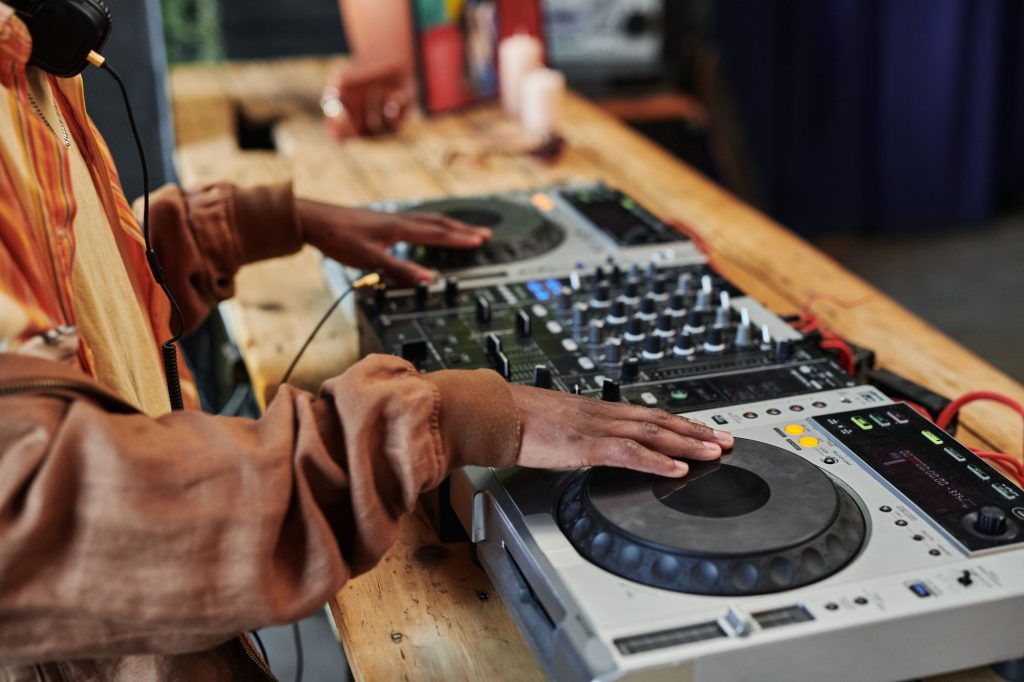Music genre blending, or genre fusion, refers to the practice of combining elements from different musical genres to create innovative and unique soundscapes. This approach has gained prominence in recent years as artists seek to push boundaries and explore new creative possibilities. This article delves into the phenomenon of genre blending, its impact on the music industry, and notable examples of genre fusion.

The Concept of Genre Blending
- Definition and Scope:
- Genre Fusion: Genre blending involves integrating characteristics from multiple genres, such as combining elements of rock, jazz, hip-hop, electronic, and classical music. This fusion results in new and distinct musical styles.
- Artistic Exploration: Artists use genre blending to experiment with different sounds, rhythms, and structures, creating music that transcends traditional genre classifications.
- Historical Context:
- Early Influences: Genre blending has historical roots, with early examples including jazz musicians incorporating elements of blues and classical music, or rock bands experimenting with psychedelic and folk influences.
- Modern Trends: In recent decades, genre blending has become more prevalent due to advances in technology and changes in consumer preferences, leading to a diverse and dynamic musical landscape.
- Technological Advancements:
- Digital Tools: Advances in digital music production tools and software have made it easier for artists to experiment with and blend different genres. Virtual instruments, synthesizers, and digital audio workstations (DAWs) facilitate the creation of genre-crossing music.
- Streaming Platforms: The rise of streaming services has exposed listeners to a wider range of music, encouraging artists to experiment with genre blending and reaching diverse audiences.
Impact on the Music Industry
- Innovation and Creativity:
- New Sounds: Genre blending fosters innovation by encouraging artists to explore uncharted territories and create unique sounds that may not fit neatly into established genres.
- Artistic Freedom: Musicians are no longer confined to traditional genre boundaries, allowing for greater artistic expression and experimentation.
- Cross-Genre Collaborations:
- Collaborative Projects: Genre blending often involves collaborations between artists from different genres, leading to exciting and unexpected musical results.
- Expanded Audience: These collaborations attract fans from various genres, broadening the reach of the music and fostering cross-genre appreciation.
- Cultural Exchange:
- Global Influence: Genre blending often incorporates elements from different cultures and musical traditions, promoting cultural exchange and appreciation.
- Fusion Genres: The emergence of fusion genres, such as reggaeton, K-pop, and Afrobeat, highlights the global nature of contemporary music and the blending of diverse influences.
- Market Trends:
- Popularity: Genre-blending music often achieves commercial success by appealing to a wide audience and capturing the interest of listeners who enjoy diverse musical styles.
- Chart Success: Many genre-blending artists have topped charts and gained mainstream recognition, demonstrating the popularity and marketability of fusion music.
- Music Discovery:
- Listener Experience: Genre blending enhances the music discovery process by offering listeners a diverse range of sounds and styles within a single track or album.
- Algorithmic Recommendations: Streaming platforms use algorithms to recommend genre-blending tracks based on user preferences, further facilitating music exploration.
- Creative Challenges:
- Balancing Act: Blending genres requires careful balancing to ensure that the resulting music is cohesive and authentic, rather than disjointed or forced.
- Critical Reception: Genre-blending music can sometimes face challenges in terms of critical reception, as it may not fit neatly into existing genre categories.
- Future Prospects:
- Evolving Trends: The continued evolution of genre blending is likely to lead to new and innovative musical styles, driven by ongoing experimentation and cultural exchange.
- Technology Integration: Advances in technology will further expand the possibilities for genre blending, enabling even more complex and creative musical fusions.

Notable Examples of Genre Blending
- Linkin Park: Known for blending rock, hip-hop, and electronic elements, Linkin Park’s music defies traditional genre boundaries, resulting in a distinctive sound that has resonated with a broad audience.
- Billie Eilish: Billie Eilish’s music blends pop, electronic, and alternative influences, creating a unique sound that has redefined contemporary pop music.
- Bad Bunny: Incorporating elements of reggaeton, trap, and Latin music, Bad Bunny has achieved significant success with his genre-blending approach, influencing the global music scene.
- Kanye West: Kanye West is known for blending hip-hop with genres such as electronic, gospel, and classical music, pushing the boundaries of rap and hip-hop.
- BTS: BTS combines K-pop with elements of hip-hop, R&B, and EDM, creating a global sensation that appeals to fans of various musical genres.
- Anderson .Paak: Anderson .Paak blends funk, R&B, hip-hop, and soul, crafting music that is both innovative and rooted in traditional genres.
- Tame Impala: Tame Impala’s music fuses psychedelic rock with electronic and pop influences, resulting in a modern take on classic psychedelic sounds.

Conclusion
Music genre blending represents a dynamic and innovative trend in the contemporary music landscape. By merging elements from different genres, artists create unique and compelling soundscapes that challenge traditional genre boundaries and offer new listening experiences. As technology and cultural exchange continue to shape the music industry, genre blending will remain a driving force in the evolution of musical creativity and expression.


